Some of the links in this post may be affiliate links.
Are you wondering how often to mist air plants? I’ve seen many people struggle with air plant watering, and there is a lot of misinformation out there. The goal of this post is to help you learn the proper ways to water your air plants, and to clarify the misinformation out there that leads to poor cultural advice on air plant care.
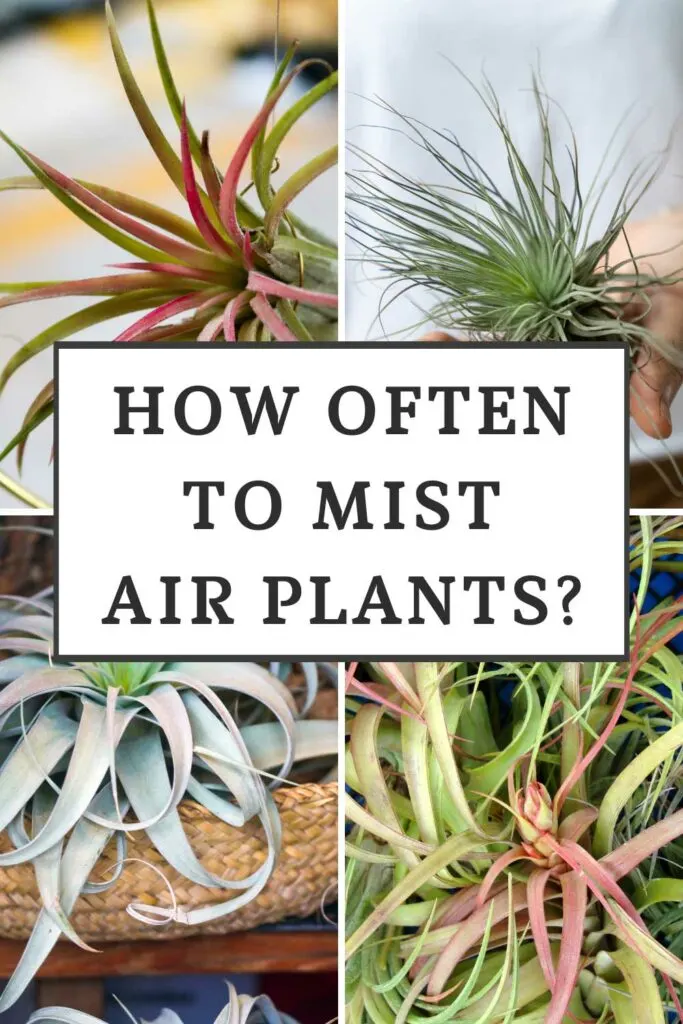
Keep reading in order to fully understand how to water air plants. I encourage you to read this entire post, because other considerations are extremely important in order to understand the “how” and “why” of air plant care.
Not fully considering your other growing conditions (outside of watering) may lead you to a false assumption that you have an overwatered air plant.
So before you whip out that spray bottle, let me explain a few things before discussing watering.
Table of Contents
Table of Contents
NATURAL HABITAT OF TILLANDSIA
Tillandsia plants, commonly known as air plants, can be found in diverse natural habitats. Most air plants are native to Mexico, Central America, and South America. Some like Spanish Moss (Tillandsia usneoides) are even native to the southern United States).

Their ecosystems range from humid and wet rainforests, to hot and dry deserts and everything in between.
Tillandsia plants are epiphytes and use their roots for the sole purpose of attaching onto tree branches, rocks, cliffs, etc. They receive all their moisture and nutrients through their foliage.
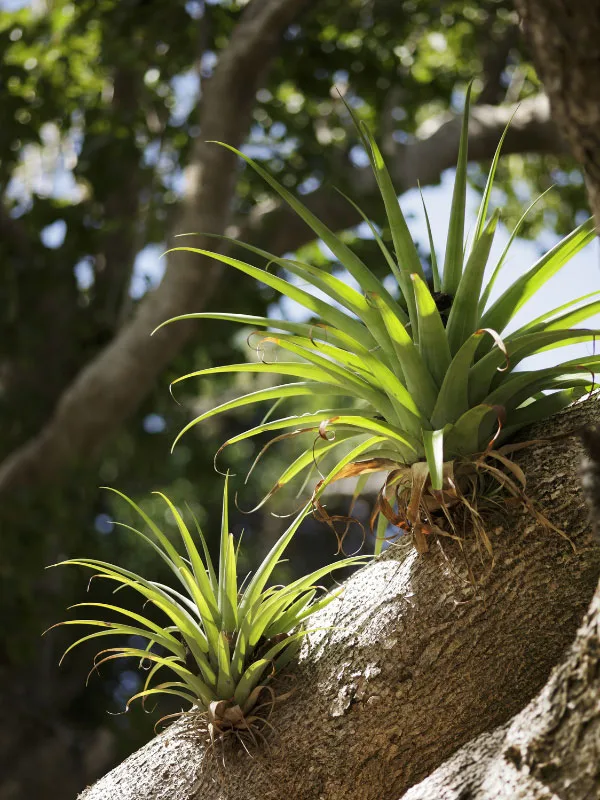
TYPES OF AIR PLANTS
Air plants absorb water and nutrients through structures on their foliage called trichomes. Trichomes are modified scales or hair that cover the foliage of air plants.
Depending on the species of air plant and its native environment, the individual plant’s appearance will look either gray or green, or sometimes something in between.
This leads us to learning about the two main types of air plants, and understanding this will give you fundamental clues on what they need when it comes to watering.
The two main types of air plants are Xeric and Mesic.
XERIC AIR PLANTS
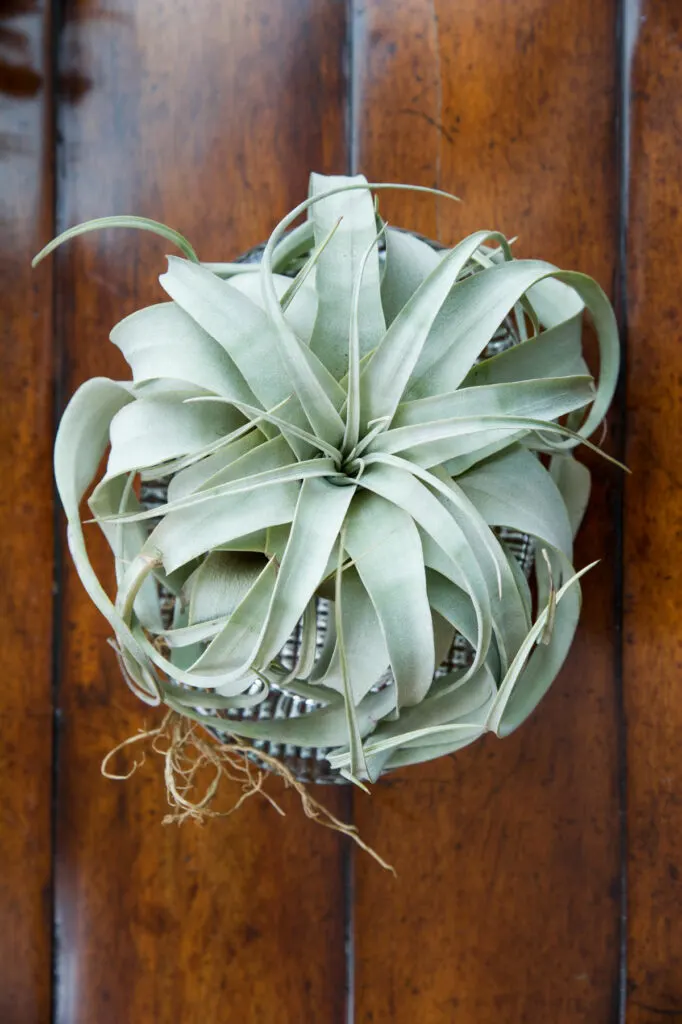
The word xeric simply describes the dry climates that some Tillandsia plants grow in. This includes plants like Tillandsia xerographica and Tillandsia tectorum which appear gray in color due to the large and dense trichomes.
These big trichomes that xeric plants have help them more efficiently absorb water and nutrients.
Oftentimes, the only water these plants get is from fog or morning dew. The dense and large trichomes also help to reflect intense sunlight in the hot and harsh desert environments that they grow in.
These types of air plants are easier to grow indoors and prove to be much more low-maintenance plants than mesic types since they need less water and are more tolerant to neglect. Xeric type air plants need stronger light than mesic type air plants.
MESIC AIR PLANTS
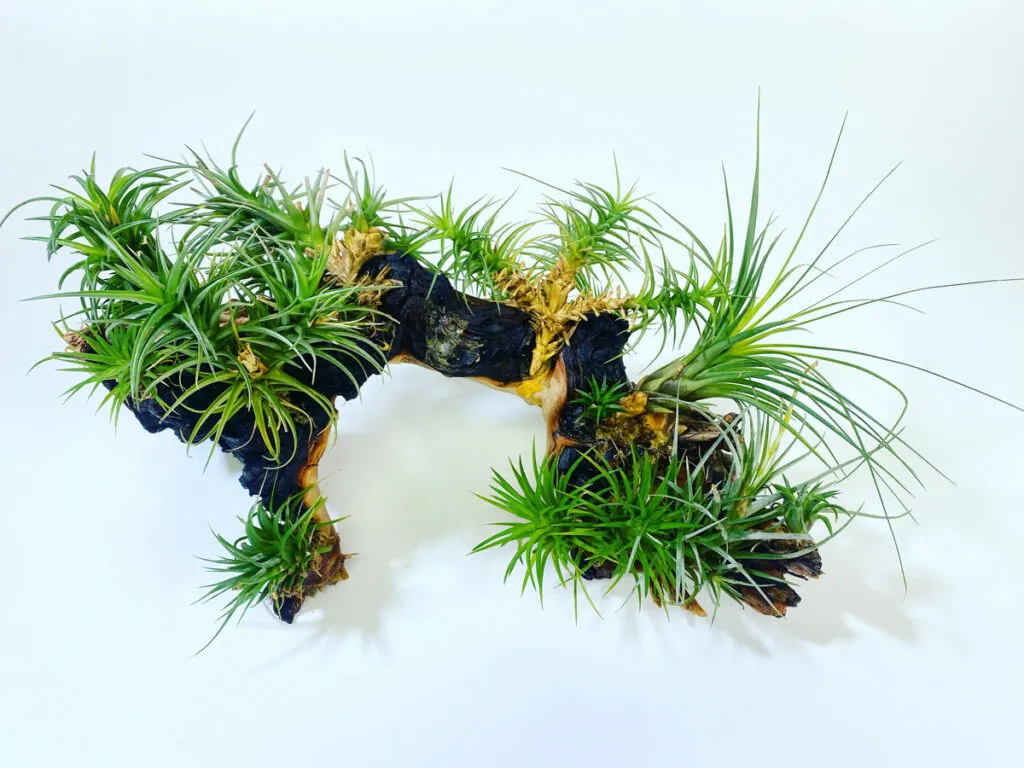
Mesic air plants grow in a much more humid environment with much more rainfall than the xeric types. These often grow in tropical forests, and have smaller and less dense trichomes, giving them a greener appearance.
Mesic type air plants don’t need as much light as xeric types, but they will still need enough. They do need much more attention to watering indoors, which can be a lot more work and more challenging to keep up with.
LIGHT: THE ANTIDOTE TO “OVERWATERING”
One last thing I wanted to discuss before I get into the 3 different watering methods for air plants is light.
If your air plant is not getting enough light, your air plant will eventually fall apart and die. If not sooner, then definitely later. The process can be slow, but it will happen.
If you’ve ever watered an air plant and it fell apart, you’ve probably assumed that you “overwatered” it.
When in fact, if you’ve kept your air plant in low light, it will have weakened to the point where it will fall apart when you give it a good watering. This is NOT an issue of watering, but rather, an issue of poor light conditions.
I’ve had many of my readers come to me saying that my soaking method of air plants caused their plants to rot, when in fact, their poor light conditions caused the demise.
You can not separate light and watering. They go hand in hand.
So where should you keep your Tillandsia plants indoors to ensure that they receive enough light so that you’re able to water them properly and help them thrive?
First of all, they need to be placed in front of a window. Tillandsias are NOT low light plants. Some species grow in full sun, and others in dappled sun or shadier conditions.
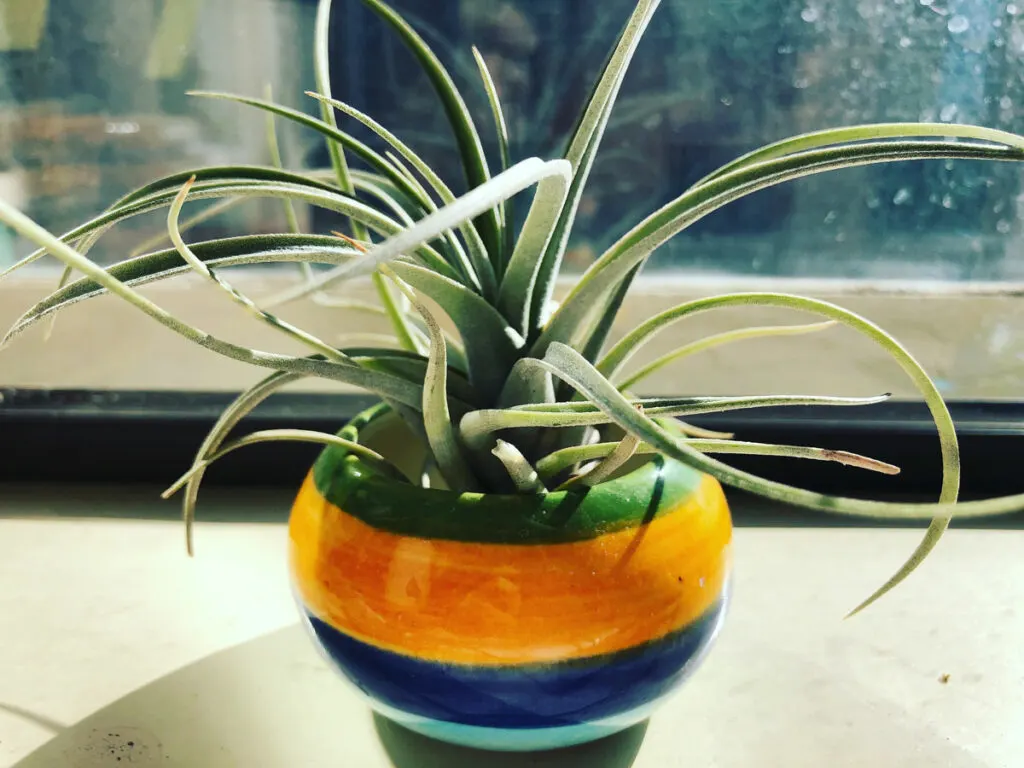
Indoors, the light intensity is substantially less than it is outdoors.
Here are some rules of thumb for ensuring that your Tillandsia plants have enough light:
- Always situate your air plants in front of a window. At a BARE MINIMUM, a window with just indirect light (meaning no direct sun).
- Even better would be a window that provides a couple hours of morning sun or even late afternoon sun. This is beneficial for growth and also for getting your air plant to bloom.
- Xeric (gray) air plants need more sun than Mesic (greener) air plants. Your Xeric air plants should definitely get at least a couple hours if not more of direct sun.
- If you live in an area with really strong sun, avoid mid-day sun as it can be too strong.
- In climates with short, dark winters, don’t be afraid to give your air plants more sun during the winter time.
- The more light, the more frequently you’ll need to water your air plants.
THREE WAYS TO WATER AN AIR PLANT
There is a very bad misconception that air plants just survive on just air alone. This couldn’t be further from the truth, especially indoors, and your indoor air plants will need much more water than you think.
The 3 main ways to water indoor air plants are:
- Misting method
- Dunking method
- Soaking method
MISTING METHOD
This method provides the least amount of hydration for your Tillandsia.
In the book Air Plants: The Curious World of Tillandsias (link to Amazon), the author provided a very interesting way to think about misting. She equates watering Tillandsias to kitchen sponges.
If you mist a kitchen sponge all the time, it will stay moist and hydrated. If you let your sponge dry out completely, a light misting will not be sufficient to hydrate your Tillandsia.
Unless you thoroughly mist your entire plant very frequently (probably daily), a light misting here and there is not sufficient.
And if you’ve allowed your air plant to become really dry and have gone many days or weeks without watering, the misting method is not enough. This goes particularly for mesic type air plants that come from humid conditions.
Airplants are covered with trichomes, that absorb water, on the entire surface of the plant, so if you mist, you should also mist the undersides of the leaves as well.
For me, misting frequently is too much work, let alone not as effective as the next two methods. Think of misting as something supplemental that you can do in between either of the next two methods that provide a more thorough watering.
DUNKING METHOD
With this method, you’d simply dunk the entire air plant in a bowl or bucket. Or you can place it under a running stream of water in your sink and turn the plant so that every leaf and surface gets wet.
Once you’ve watered it, make sure you gently shake the air plant and turn it upside down to remove excess water in order to avoid rotting. Remember that indoors we don’t have good air circulation so this is important to do.
This is particularly important for species that have bulbous bases where water can easily accumulate and cause rotting if it sits for too long.
For greener air plants (mesic types), you should use this method at least 3 or 4 days a week. For gray air plants (xeric types), you can get by with a weekly watering by dunking.
If your Tillandsia is flowering, avoid dunking the flower spike. This will help it last longer.
SOAKING METHOD
For loose air plants that are not mounted, the soaking method provides the most thorough watering method.
I’m not a fan of watering schedules for potted plants in soil, but for air plants, a routine is a good idea.
Simply fill a bowl, bucket, or sink with water and throw the air plants in. Give them a good soak for 1-2 hours weekly. Just make sure that your container or sink has no soap or detergent residue and is very clean.
Then be sure to shake out excess water. You can even dry them upside down on a paper towel or a bath towel before placing them back in their growing location.
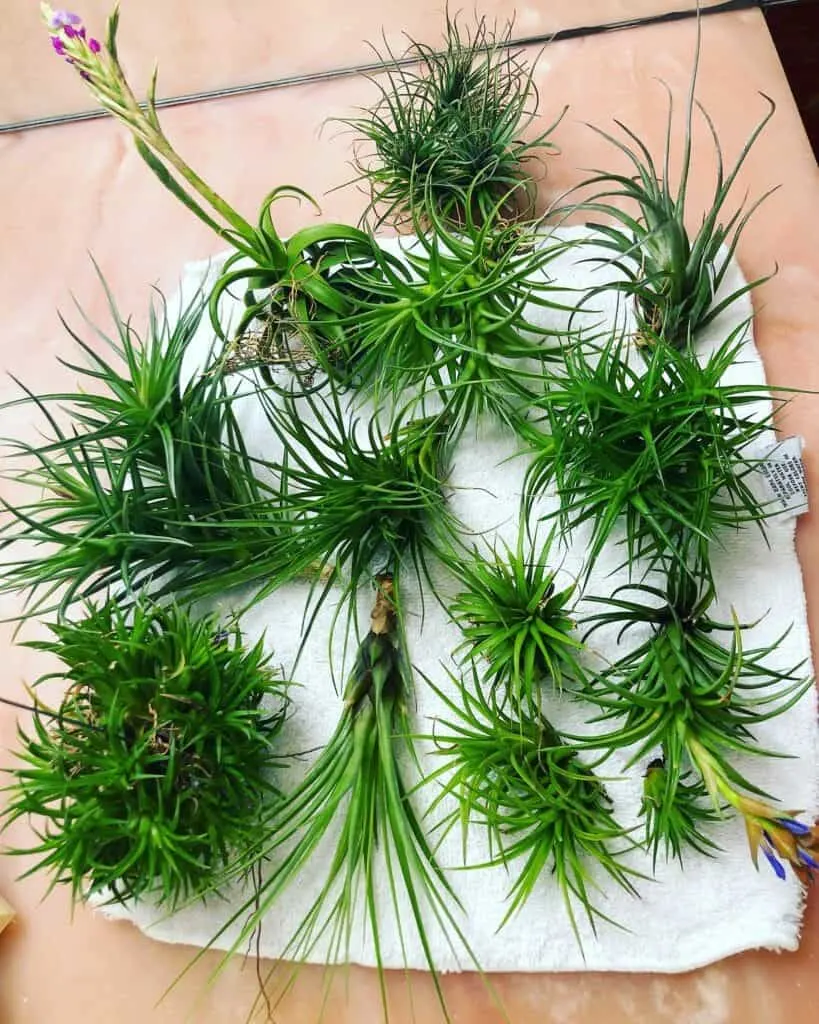
This is also a good method to use if you’ve neglected your air plants and they have dried out severely.
How do you know if your air plant is underwatered or overwatered?
UNDERWATERED AIR PLANT
Here are some signs of underwatered air plants:
- Dry or brown leaf tips
- Edges of the leaf are curling
OVERWATERED AIR PLANT
As I mentioned before, if your air plant has fallen apart, that likely happened because it was not in enough light. It’s hard to overwater an air plant indoors. The main tip is to ensure that you shake excess water out after watering.
If your air plant dries out quickly right after watering, it’s hard to “overwater” an air plant.
TYPE OF WATER TO USE
The kind of water that you use to water your Tillandsia plants matters a lot. The best water to use for watering air plants is the following, in decreasing order of preference:
- Rain water
- Filtered water or spring water
- Tap water
Make sure the water is room temperature or warmer. Lukewarm water is great as well.
If you use a water softener for your home, most of these add sodium to the water, and this is toxic to plants, so avoid watering your Tillandsia plants with that.
You should also avoid using distilled water. Airplantman, a grower of Tillandsia plants, states that this will kill your plant because distilled water is so pure that it will remove nutrients through osmosis.
OTHER AIR PLANT CARE TIPS
- If you can provide some air circulation indoors, this would make for healthy air plants. In nature, they enjoy a lot of air circulation. Perhaps during warm weather, open those windows and allow some air circulation for your plants.
- Never let any excess water accumulate in your air plants. After watering, turn them upside down and shake out excess water. You can also dry them upside down.
- Keep your temperatures warm. If you are comfortable, your air plant will be too.
I hope you’ve enjoyed this post on watering airplants. Do you have any air plants? Comment below. I’d love to hear!

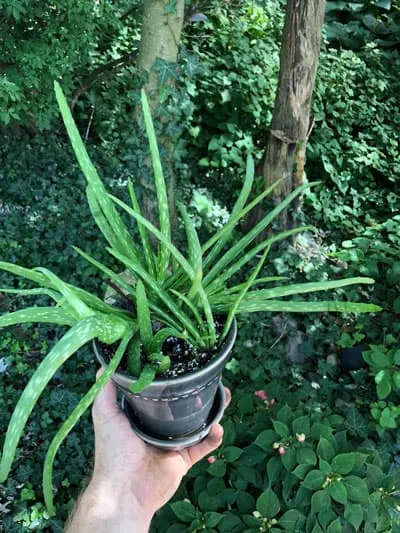
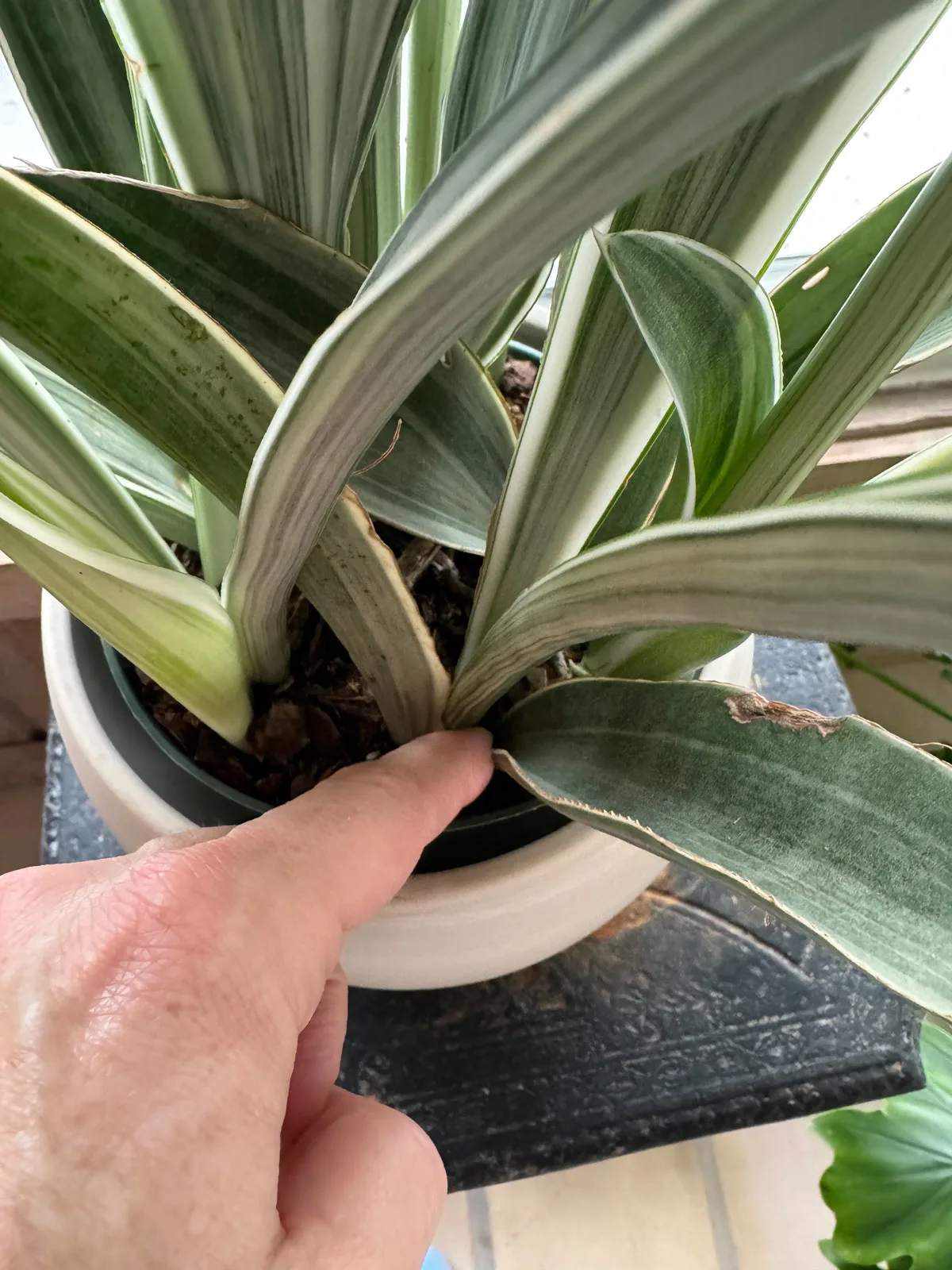
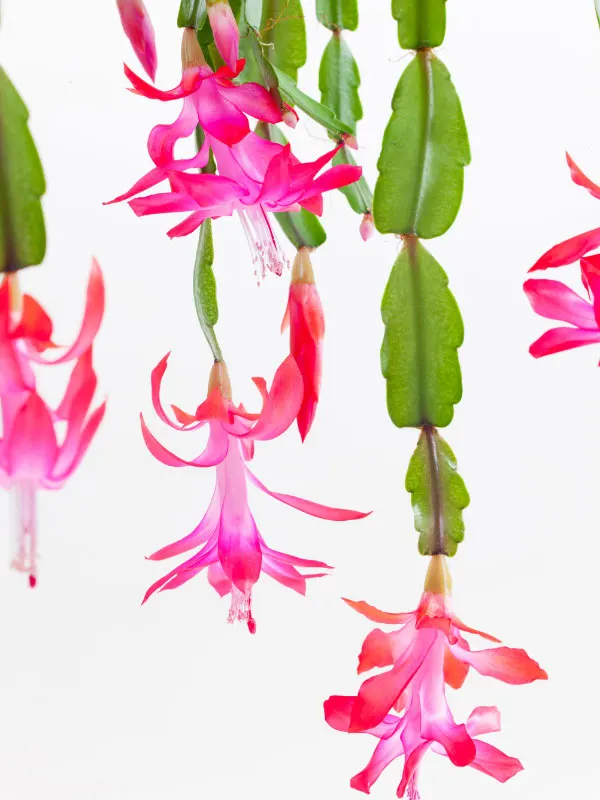
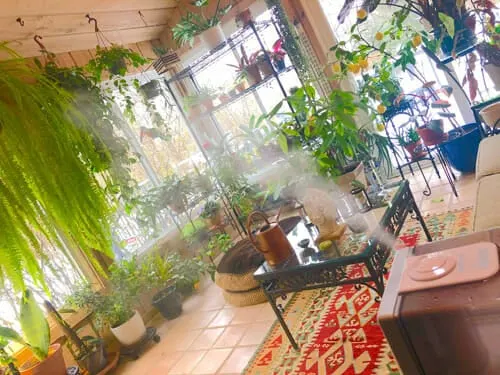
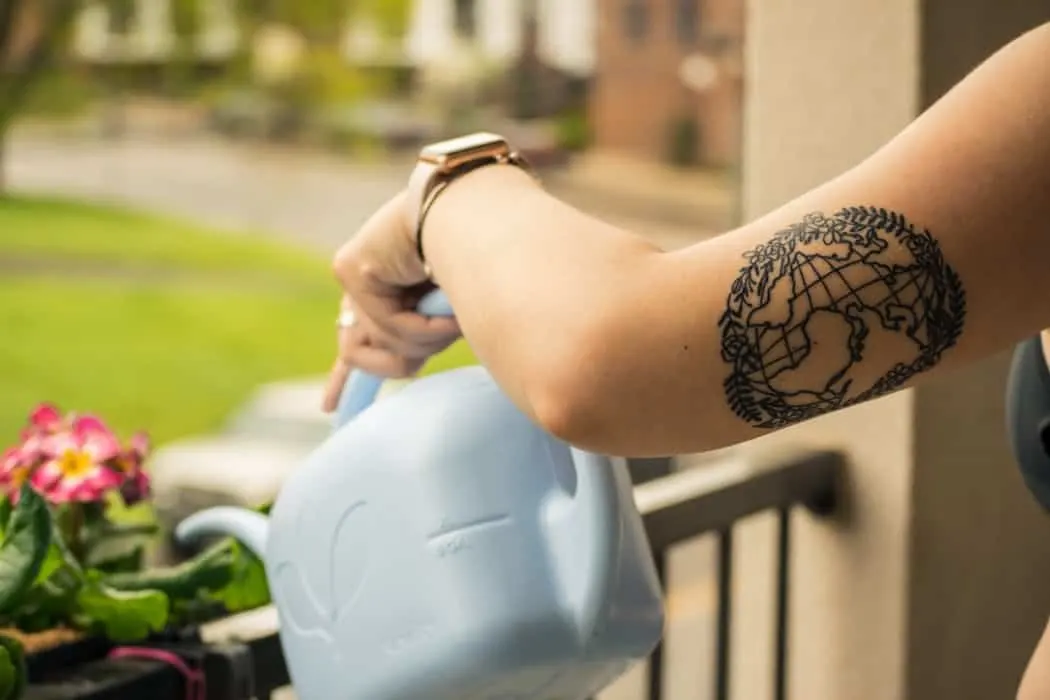
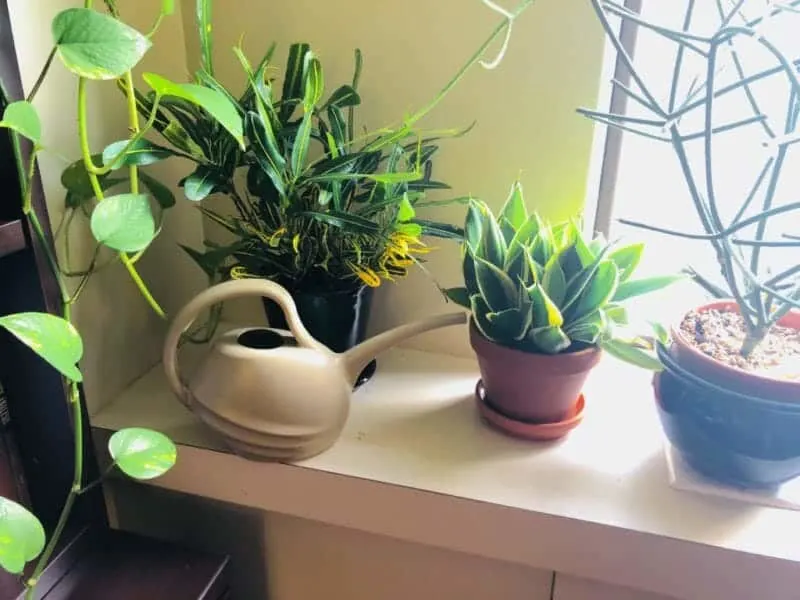
Grace
Wednesday 18th of September 2024
Thanks, I wondered if I was doing the right thing.
Raffaele Di Lallo
Wednesday 18th of September 2024
You're very welcome Grace!
Barbara Jones
Monday 19th of August 2024
Thank you so much. At least I’m headed in the right direction.
Raffaele Di Lallo
Monday 19th of August 2024
You're very welcome Barbara!
Little Tree
Sunday 18th of February 2024
I sure enjoyed your article. I have a beautiful Air plant. It's green. Mesic. I've had it for 4 years. A 😊 plant. I spray it. It's happy. I have it in a shot glass. Gets late afternoon sun. Sits next to his spider plant buddy. I have 3 more coming in to ad to my air plant garden. They are wonderful buddies.
Raffaele Di Lallo
Monday 19th of February 2024
Sounds like you're doing a wonderful job and your plant is happy! I'm glad you enjoyed my article. :-)
Helena
Wednesday 14th of February 2024
I have 11 air plants all facing front window with lots light, therefore I been reading lots of people opinion they said 20 minutes soaking every 2 weeks is enough . Please let me know my plants look healthy but I’m concerning not giving them enough water. ? Thank you love reading your article
Raffaele Di Lallo
Thursday 15th of February 2024
Hi Helena. Every 2 weeks is not enough. Are they green or gray air plants? Do you know which species you have?
Noel
Thursday 24th of August 2023
Thank you for this succinct information! Have struggled with keeping my airplanes alive, I think I wasn’t getting them enough sun, and the watering instructions are great. It’s so confusing when trying to look through different google articles. I’ve had my eye actually on your book at a local nursery, not knowing it was yours and you also had a blog. Wonderful to have both.
Raffaele
Saturday 26th of August 2023
Glad you found it helpful Noel! If you get the book, I hope you enjoy it (and of course the blog is free!)